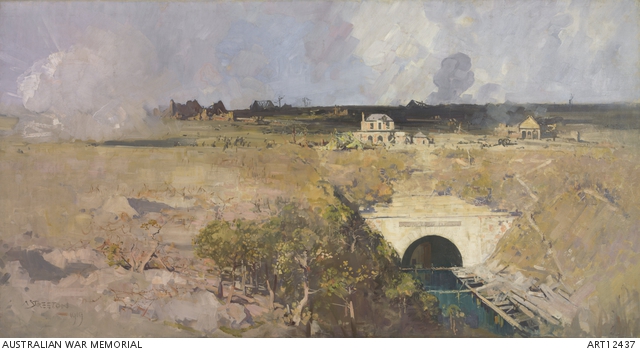Arthur Streeton and the art of war
Australian artist Arthur Streeton was made an Official War Artist and worked in France in 1918. With his view of the conflict limited by restrictions to his movements – he was not allowed to visit forward positions, or record battles – he found inspiration in the rear areas.
Streeton painted British, French, and German artillery pieces, tanks, aircraft, trains, and transport vehicles. In the latest issue of Wartime, Mark Whitmore notes that these works were “accurate and convincing representations that are almost still-life compositions”, and reveal his mastery in depicting many of the new technologies that were transforming the nature of the war.
Influenced by French Impressionism and known for his landscape art, Streeton produced several panoramas of the French countryside in the summer and autumn of 1918. The Australian War Memorial’s collection of his work also features men on marches, hospitals, the evidence of destruction caused by artillery, and intense activity undertaken by those in logistical support roles.
Following is a selection of some of the 180 war works by Streeton that are held by the Memorial. Click the icon in the top right-hand corner to see the gallery.
To read Mark Whitmore’s article purchase Issue 85 of Wartime here.









